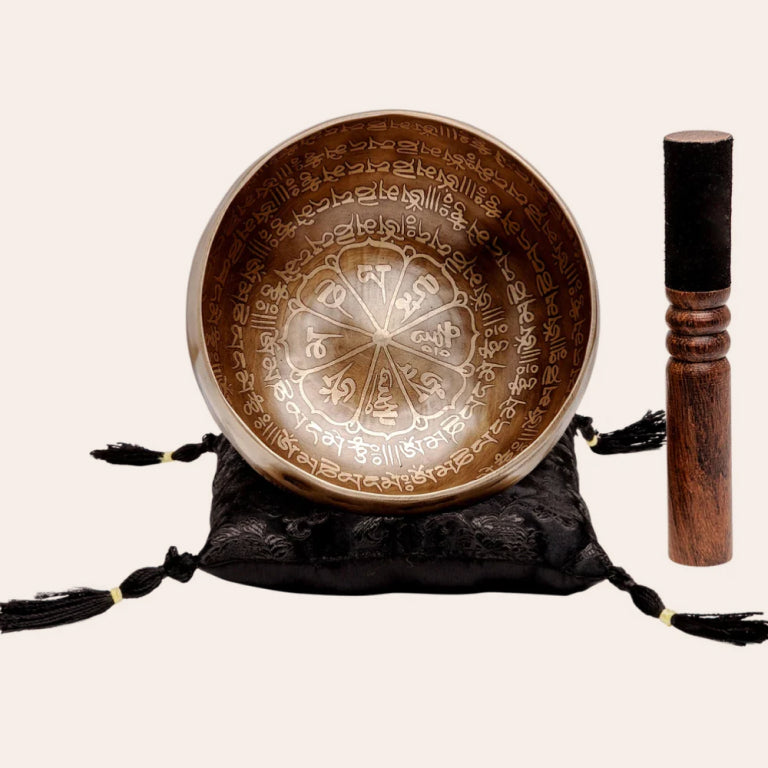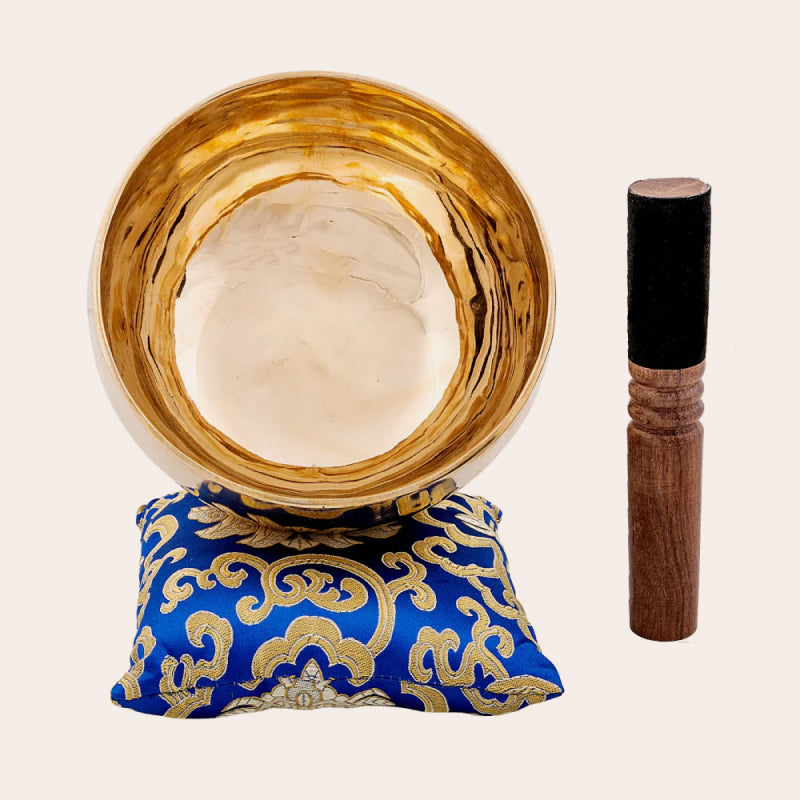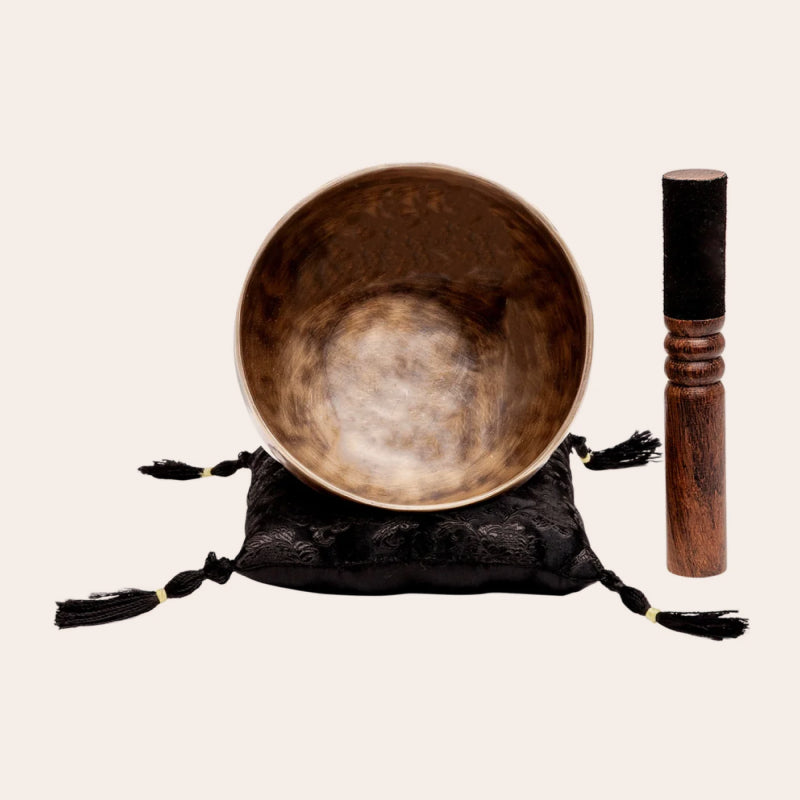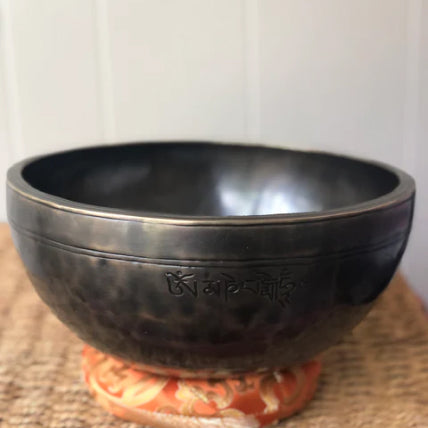Singing Bowl Guide: Part 2 - 11 Techniques and Elements of Playing
Having an acoustic body, singing bowls are one of the easiest musical instruments you can play without a lot of practice.
But what’s the right way to play a singing bowl? Is there an advanced way of playing it? What to remember when playing the singing bowl?
There isn’t any right or wrong way to play a singing bowl, but the Gong Beat technique is the best for beginners.
Rimming is the next step, followed by the Wah Wah technique and the multi-handed technique (for advanced users)
I’ll teach how to play a singing bowl several ways with stepwise guides for beginners and pros.
This article is the second part of a series of five posts that teach A to Z about singing bowls.
Elements Important For Playing
We learned about the anatomy of singing bowls in Part 1 of the singing bowl.
So, you know the three parts of a singing bowl- the body, mallet, and cushion are crucial. They’re important because these three elements help you play the bowl well and grow.
The body of a singing bowl may be metal or crystal in various sizes, shapes, and engravings. Some bowls may have protrusions or depressions that affect their sounds. The right mallet helps you find the sweet spot of your bowl, and the cushion protects the sound from disturbances.
So, remember, you can create your mix or fusion of techniques, beats, and rhythm for playing every singing bowl.
Once you’ve set up your singing bowl correctly, you can start playing them in simple to advanced ways. So, go ahead and check Part 1 if you haven’t already.
What’s The Basic Way to Play a singing bowl?
The most basic way of playing the sound bowl for beginners is the Gong Beat technique. They were widely used earlier as a starting ritual for religious rituals. Moreover, they may be the only right technique for playing certain bowls.
Also called striking or tapping, this method requires minimal pressure on the bowl to create healing sounds.
Here, you tap the rim, side, or inner walls of your singing bowl with a mallet.
The rhythm of this beat consists of repeated taps that should resemble an echoing resonant sound. In this basic technique to play the Tibetan singing bowl, you tap the bowl in continuous rhythmic motions without letting the sound fade out.
Plus, you can create your beats by following music or chants.
The Gong Beat technique is an excellent way for beginners to acquaint themselves with the sounds of a new Tibetan bowl.
What’s The Easiest Way To Make Your Bowl Sing?
Once you get to know the different sounds of your singing bowl from all angles with the Gong Beat technique, next comes the making the singing bowl sing.
In this technique, you switch from tapping to gently circling the tip of the mallet over the rim of the bowl, its sides, or inner walls to create a continuous sound without pause.
Depending on the pressure you apply to the bowl with the mallet, the sound may turn loud, soft, or deep. Different parts of a singing bowl produce different sounds too.
When you continuously rim a bowl, you’ll discover the harmony and sweet spot of the singing bowl. Also, large bowls with loud sounds may be rimmed to clear negativity from large areas.
How to Play Your Singing Bowl When Water Charging?
Water charging is based on timeless techniques related to acoustics, religion, and energy healing.
Typically, a singing bowl is filled up to half with water before rimming it for long intervals.
When such a bowl is rimmed continuously, not only does the bowl sing, but the water molecules in it sing too. Due to powerful sound vibrations, the water inside the bowl gets charged.
And people can use this charged water for anointing, consecration, and clearing. But, you should never consume the water charged in a metallic singing bowl as it may contain minerals you’re not supposed to consume.
Do you want to make an elixir for consumption with the sound bowl? Keep a glass of water next to the bowl while playing, and consume it afterward.
Learn all about water charging with singing bowls in this article.
But before you discover other powerful ways to use your singing bowl, always remember to keep your bowl dry after the charging session. Moisture can rust or damage metallic singing bowls in scores of ways.
How To Play Singing bowls With Both Hands?
Now that you know the usual ways to play singing bowls, it’s time to level up to playing with both hands. This is an easy technique where you hold a mallet in each hand to play the same bowl simultaneously.
While this technique isn’t easy for beginners, practice makes you better.
Moreover, the two-handed singing bowl playing technique needs deep knowledge about the bowl and flexibility in your hand muscles (it comes from playing singing bowls for a long time).
Just like most of us started typing with a single hand, you can train both hands to play simultaneously by regularly practicing with one hand.
While rimming with both hands may be impossible, it’s good to tap your bowl intermittently with mallets in both hands.
Advanced users can also try mixing the techniques of tapping with one hand and rimming with the other.
How To Play Multiple Singing Bowls?
Now comes an even tougher technique- playing singing bowl sets.
People usually play multiple singing bowls with each other or alone. You can get started on your own with two bowls, then three, and so on.
If you’re new to the concept, it’s good to arrange bowls on your sides or in front to get a good reach.
Typically, singing bowl sets exist with 7 chakra bowls, small to large bowls, metal and crystal bowls, or by varieties (Lingam and Yoni bowl set). And playing these simultaneously opens the seven chakras, releases stress, brings harmony, or balances yin and yang.
To play multiple singing bowls at once, arrange their bowls in a circular, semi-circular, triangular, or rectilinear pattern in front of you.
Playing multiple sound bowls produces new tones, harmonies, and healing sounds. It’s a fun thing to try if you’ve been playing singing bowls for a while.
How to Chant While Playing Singing Bowls?
The last technique is also the most advanced one because it combines your sounds with the bowl. Called the WAH-WAH technique, small singing bowls are used for this playing technique.
All you need to do differently is raise the bowl to your mouth and chant after tapping or rimming it. As a result, your breath intertwines with the healing vibrations produced by the bowl to set intentions and amplify manifestations.
You can chant common mantras, verses, or positive affirmations for this.
Here are some positive affirmations to start with:
- I am strong/loved/confident.
- My spirit is clean and wise.
- I attract luck.
- I trust my intuition.
- I am connected to the universe/ mother nature/ Earth.
Troubleshooting: Why Is My Singing Bowl Not Singing?
I’ve taught you all the different ways to play singing bowls of all sizes and shapes.
But if your singing bowl is still not making any deep, resonant, or lasting sound, there might be a few things you need to check.
Here are some common causes for singing bowl not singing:
- Is Your Singing Bowl Cracked?
- Is Your Singing Bowl Dented?
- Is Your Singing Bowl Broken?
If you answered ‘Yes’ to any of the above, it might be time for a new bowl. Metallic singing bowls often look inconspicuous, even with hairline cracks. Often, a small fall or clash against another bowl may be all to blame. So, it’s important to store and carry your bowls properly too.
The golden rule is always to keep your singing bowl on a flat surface.
Other than the above three reasons, your singing bowl may not make any sound due to the wrong mallet or faulty playing technique.
You can test the same mallet with other bowls or examine your playing technique. If the fault is in the pressure you’re exerting with the mallet, try to relax, breathe, or meditate before trying again.
How To Play Your Singing Bowl Correctly
So, how do you play the singing bowl properly?
Here’s a quick summary of six easy-to-advanced ways for playing singing bowls we learned today:
- You can tap gently on the rim or sides of the bowl.
- You can circle the bowl’s rim with the mallet with gentle pressure.
- You can fill the bowl up to half with water and play rim the bowl to do water charging.
- You can hold a mallet in each hand to play with both hands at once.
- You can arrange multiple bowls around you to play many at once.
- You can fuse your sound with the singing bowl sounds with the Wah-Wah technique.
If your singing bowl isn’t singing, check the troubleshooting checklist I shared above.
So, what’s your favorite technique to play the bowl?
Stay tuned for Part 3 on the Uses and Applications of singing bowls.










